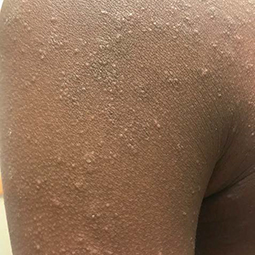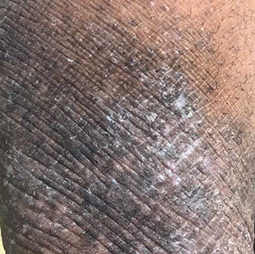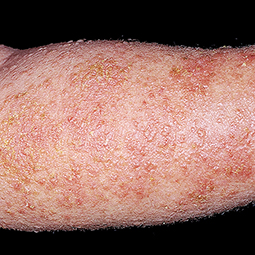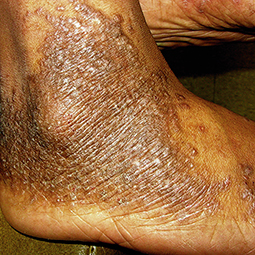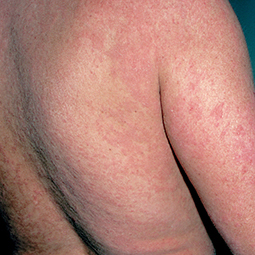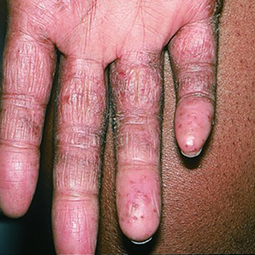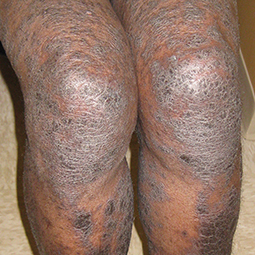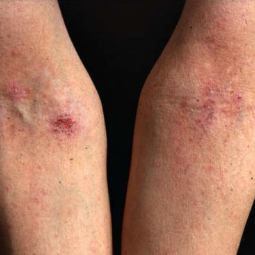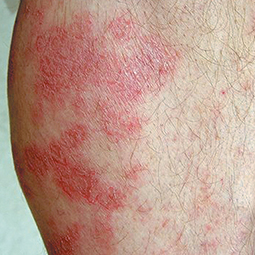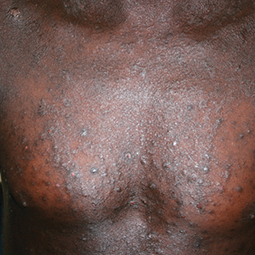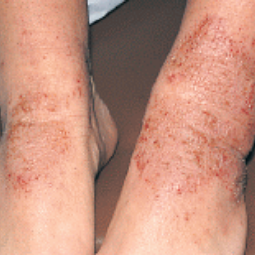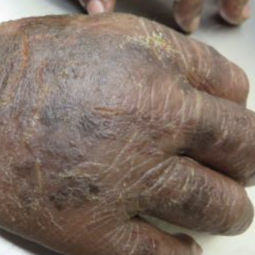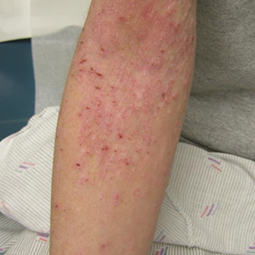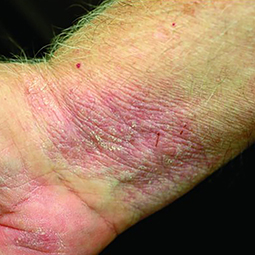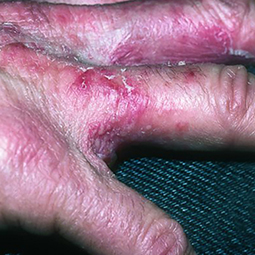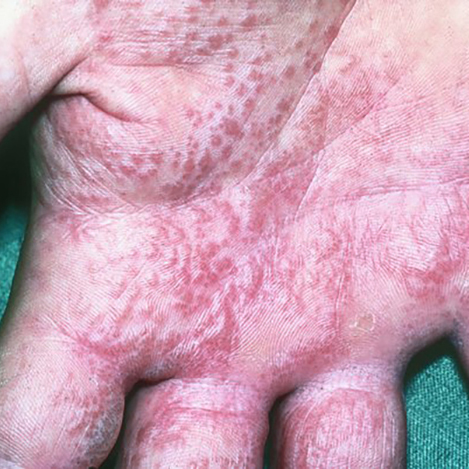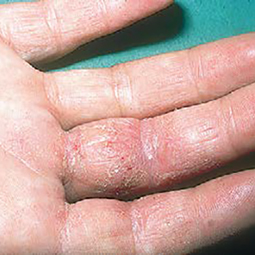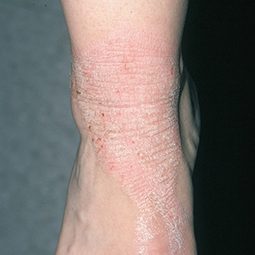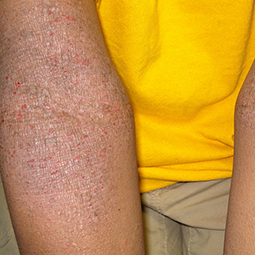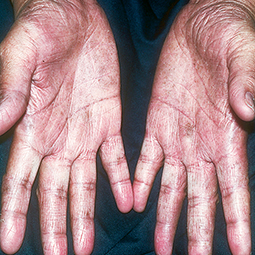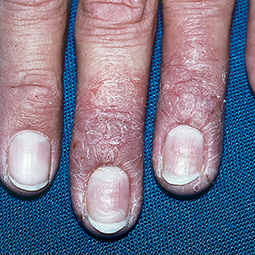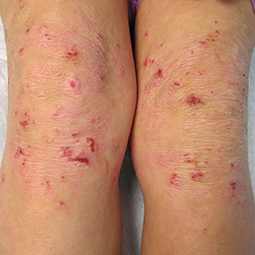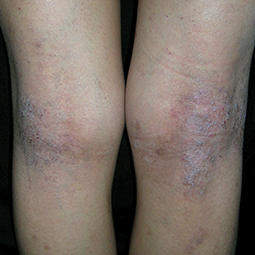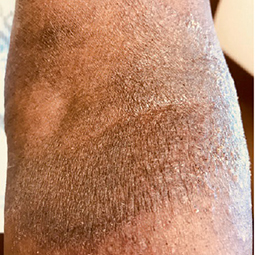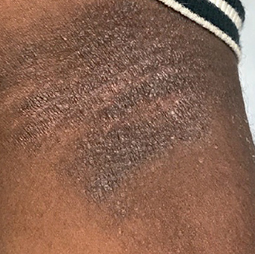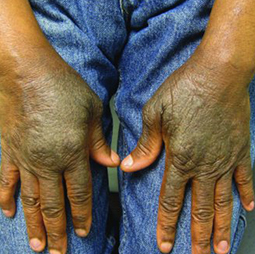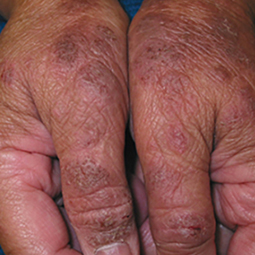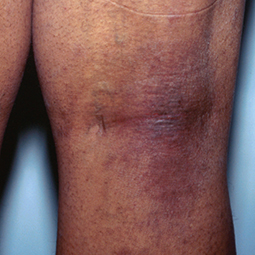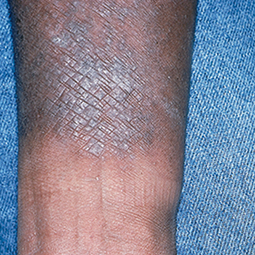RECOGNIZE HOW CLINICAL SIGNS MAY PRESENT IN SKIN OF COLOR
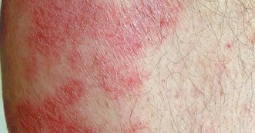
Disease may appear pink or red in lighter skin tones.1,2

In darker skin, disease may appear gray, violet or dark violet.2 Erythema in darker skin may delay diagnosis with presenting patients having more severe disease.3,4

Follicular accentuation is a common atopic dermatitis feature in skin of color.
These bumps can appear with or without scaly patches on the skin.2,5

Patients of color often experience hyper- or hypopigmentation with marked lichenification following skin inflammation.1‑3,6
All images displayed on this page are the property of their respective copyright holders. Unauthorized use, reproduction, distribution, or
modification of these images without the express written permission of the copyright holder is strictly prohibited.
The burden of moderate-to-severe atopic dermatitis extends
beyond clinical appearance
Patients with moderate-to-severe atopic dermatitis can
be disrupted by unpredictable flares—day and night
of adults reported daily itch7,a
of the year is spent in flares as reported by
caregivers of children aged 2 to 13 years and
patients aged 14 years and older8,b
aData from a study of adult patients with moderate-to-severe atopic dermatitis with chronic disease for ≥3 years (n=380).7
bTelephone interviews conducted in 2004 included 779 caregivers of children aged 2 to 13 years, 125 adolescents aged 14 to 17 years, and 1098 adults with moderate-
to-severe atopic dermatitis from 8 countries (including the United States). Caregivers of patients aged 2 to 13 years reported 122 days per year with flares and 9 flares
per year with each lasting an average of 14 days. Patients aged 14 to 17 years reported 116 days per year with flares, and 8 flares per year with each lasting an
average of 15 days. Adults reported 146 days per year with flares and 10 flares per year with each lasting an average of 15 days.8
Are your patients struggling with
uncontrolled moderate‑to‑severe
atopic dermatitis?
